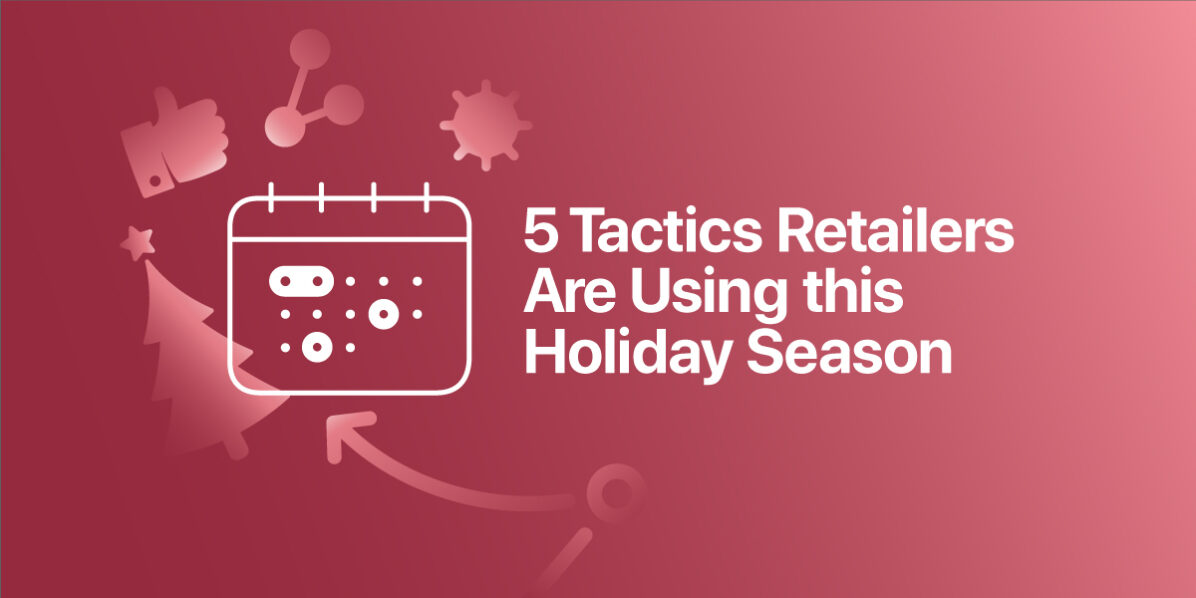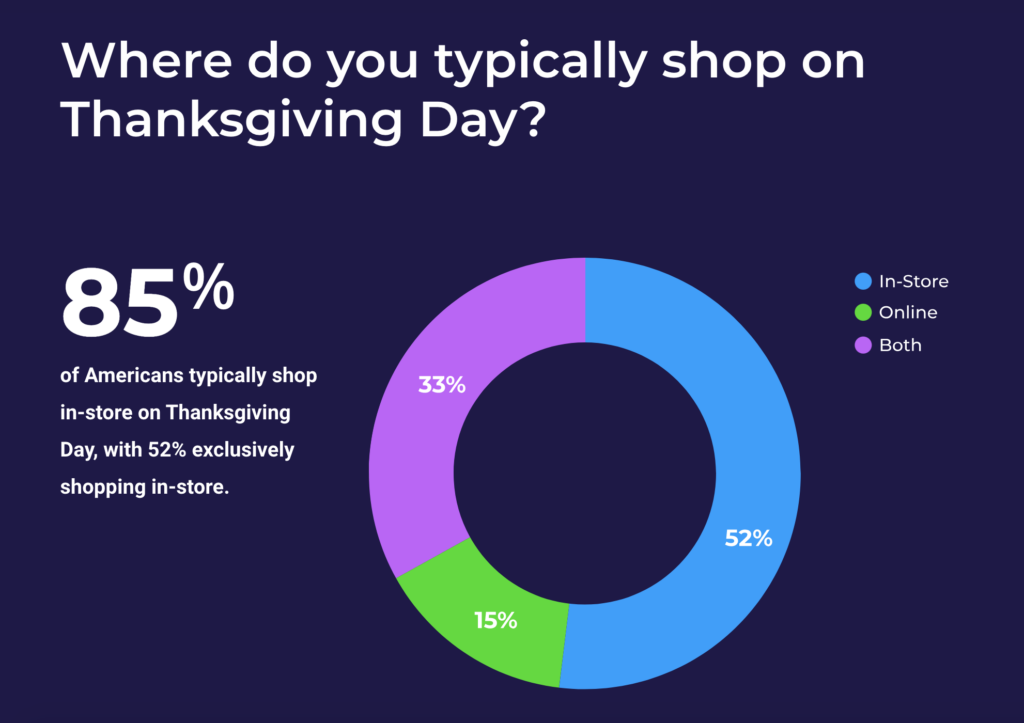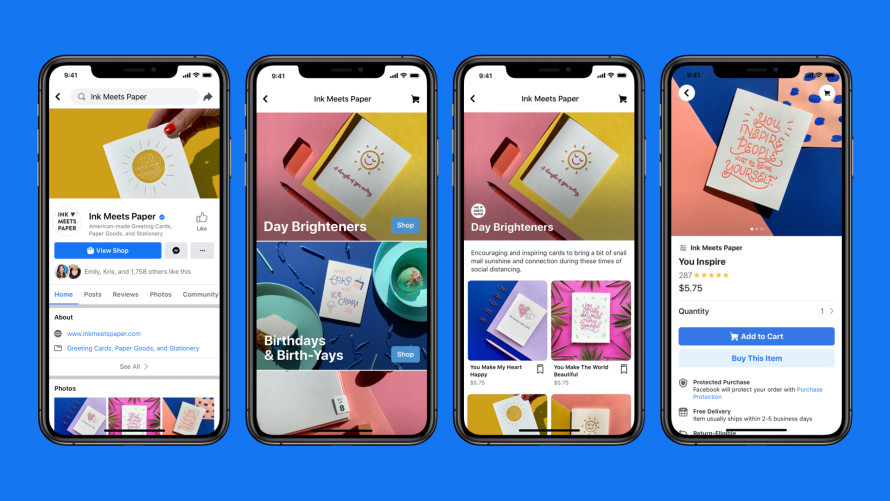5 Tactics Retailers are Using This Holiday Season

It’s late August, a time when retailers are planning their next big campaign for the holiday season. However, given the current state of the world, it’s no surprise that the holiday shopping season is going to look very different this year. In the past month, many major retailers have announced the closing of their brick-and-mortar locations on Thanksgiving, including Walmart, Target and Best Buy, breaking a decade-long tradition in which Black Friday offers would be available in-store as early as Thanksgiving evening.
“To meet our customers’ changing lives this holiday, we’re enhancing the way we fulfill orders, from offering more convenient pick-up options at our stores, to making sure BestBuy.com orders arrive at the right time,” said the retailer in a statement.
Like Best Buy, the other businesses are citing COVID-19 as the catalyst behind the store closures in an effort to prevent crowding.
So, how will retailers balance the need between driving sales and keeping people safe? How can retailers make the most out of an uncertain holiday shopping season? Below, we share the 5 tactics retailers are using this holiday season to maximize their sales during the busiest shopping time of the year.
1. Black Friday Deals May Start as Early as October
To avoid the rush of in-store shoppers in mid to late November, many stores are kicking off their Black Friday deals both in-store and online as early as October. For instance, Target confirmed that their “biggest holiday deals” will be available starting in October and people can catch these deals both online and in-stores. With 52% of Americans typically shopping exclusively in-store on Thanksgiving, according to a recent Fluent survey, it might be worth considering the early seasonal discounts in your marketing mix to maximize your holiday sales.

It’s also worth noting that Amazon’s Prime Day is now taking place in October, shifting from a Back to School sales event in July to a pre-holiday one, just days before Black Friday promotions. This postponed date will likely contribute to the pull-forward holiday buying trend and will lead to back-to-back deals for some retailers. This could provide a huge financial gain to brands whose involvement in the big shopping day helps them acquire new customers and drive brand awareness, not to mention the sales boost: 68% of brands expect a lift in sales of 3x or greater from their Prime Day promotions.
2. Black Friday Deals Will Also be Available Online
Thanks to COVID-19, more consumers are planning to shift their holiday spending online this year with an expected 73% increase in those who will shop exclusively online. As such, retailers will likely avoid in-store exclusives so people won’t have to push through crowds to take advantage of the best offers. In fact, younger consumers, particularly Millennials and Gen Zers, are planning to shop either online or both online and in-store. As a retailer, get your customers excited with online gift guides that preview your offer.
3. Buy Online, Pick Up In Store (BOPIS) is Here to Stay
The pandemic accelerated new omnichannel options and service offerings including Curbside pickup and Buy Online, and Pickup In Store (BOPIS), which has allowed shoppers to make purchases online with minimal human contact. These buying methods are also likely to increase as shoppers get focused on holiday spending. As AdParlor’s Drew Crawford said, “The move towards ship-from-store to speed up delivery times and others who adopted new delivery options for the first time will remain key in the second half of the year.”
4. Holiday Shopping via Mobile and Social Media Will Increase
People aren’t only shopping online but they’re also shopping on their phones and social media. According to a Salesforce survey, 37% of US adults are more interested in mobile app shopping and 22% are interested in shopping via social. This could be especially beneficial for retailers who’ve enabled their eCommerce presence on social media, namely on Facebook Shops.

In fact, Facebook also recently announced that Instagram’s Checkout feature, which lets users pay for items directly inside the app, will soon be available to all U.S. businesses, 18 months after the feature remained exclusive to certain partners. As a retailer, expanding your channels to online sources such as mobile and social media will help you capture and maximize consumer attention during a peak shopping period.
5. Shipping Dates Will Be Moved Up
To encourage on-time deliveries, shipping dates will be moved up from Dec 15-20 to early December to accommodate Boxing Day and the holidays, including Christmas. Based on the increase in packages due to the surge in online orders, along with social distancing measures in distribution centers, traditional delivery providers might run out of capacity during the holidays. As such, ensure shoppers are able to get their packages on time by promoting earlier delivery dates.
Encouraging customers to get their holiday shopping done ahead of time is also expected to reduce spikes in checkout fees. To avoid a shipping crunch, UPS announced plans for significant holiday peak checkout fees to offset the surge in residential drop-offs while USPS announced in mid-August that it will be adding holiday checkout fees for the first time.
Prepare for a Very Different Holiday Shopping Season
As it’s been said before, this is an unprecedented time for every marketer. However, with careful planning, creative problem solving along with the ability to pivot and remain agile, using these key trends will help prepare you for the upcoming holiday shopping season. Stay tuned for more updates and insights in regard to the holiday season as we get closer to the busiest shopping period of the year.
If you’re interested in taking your campaigns to the next level, let’s chat. We’re here to help!